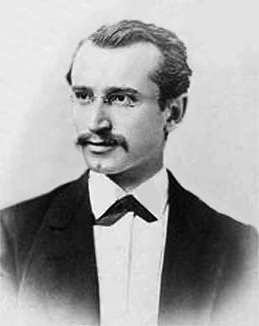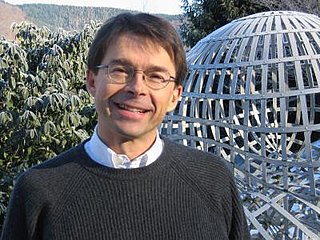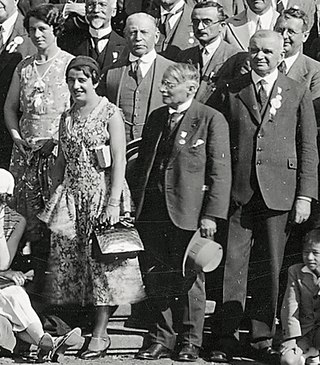
Gerhard Karl Erich Gentzen was a German mathematician and logician. He made major contributions to the foundations of mathematics, proof theory, especially on natural deduction and sequent calculus. He died of starvation in a Czech prison camp in Prague in 1945.

Abraham Fraenkel was a German-born Israeli mathematician. He was an early Zionist and the first Dean of Mathematics at the Hebrew University of Jerusalem. He is known for his contributions to axiomatic set theory, especially his additions to Ernst Zermelo's axioms, which resulted in the Zermelo–Fraenkel set theory.

Hugo Hadwiger was a Swiss mathematician, known for his work in geometry, combinatorics, and cryptography.

Felix Bernstein, was a German mathematician known for proving in 1896 the Schröder–Bernstein theorem, a central result in set theory, and less well known for demonstrating in 1924 the correct blood group inheritance pattern of multiple alleles at one locus through statistical analysis.
Wladimir P. Seidel was a Russian-born German-American mathematician, and Doctor of Mathematics. He held a fellowship as a Benjamin Peirce Professor in Harvard University. During World War II, he was with the Montreal Theory group for the National Research Council of Canada.

Andreas Speiser was a Swiss mathematician and philosopher of science.

The Finsler–Hadwiger theorem is statement in Euclidean plane geometry that describes a third square derived from any two squares that share a vertex. The theorem is named after Paul Finsler and Hugo Hadwiger, who published it in 1937 as part of the same paper in which they published the Hadwiger–Finsler inequality relating the side lengths and area of a triangle.

Alexander Wilhelm von Brill was a German mathematician.

Michael Struwe is a German mathematician who specializes in calculus of variations and nonlinear partial differential equations. He won the 2012 Cantor medal from the Deutsche Mathematiker-Vereinigung for "outstanding achievements in the field of geometric analysis, calculus of variations and nonlinear partial differential equations".

Karl Rudolf Fueter was a Swiss mathematician, known for his work on number theory.
In set theory, the Schröder–Bernstein theorem states that, if there exist injective functions f : A → B and g : B → A between the sets A and B, then there exists a bijective function h : A → B.
Christine Riedtmann is a Swiss mathematician specializing in abstract algebra. She earned her PhD in 1978 from the University of Zurich under the supervision of Pierre Gabriel, and is a professor emeritus at the University of Bern.

Albert Pfluger was a Swiss mathematician, specializing in complex function theory.
Max Gut (1898–1988) was a Swiss mathematician, specializing in algebraic number theory and group theory.
Rudolf Weyrich was a German mathematician, physicist, and inventor.

Friedrich Bachmann was a German mathematician who specialised in geometry and group theory.

Arnold Oberschelp was a German mathematician and logician. He was for many years professor of logic and science in Kiel.
Johann Jakob Burckhardt was a Swiss mathematician and crystallographer. He was an invited speaker at the International Congress of Mathematicians in 1936 in Oslo.

Otto Forster is a German mathematician.
In geometry, a Blind polytope is a convex polytope composed of regular polytope facets. The category was named after the German couple Gerd and Roswitha Blind, who described them in a series of papers beginning in 1979. It generalizes the set of semiregular polyhedra and Johnson solids to higher dimensions.













